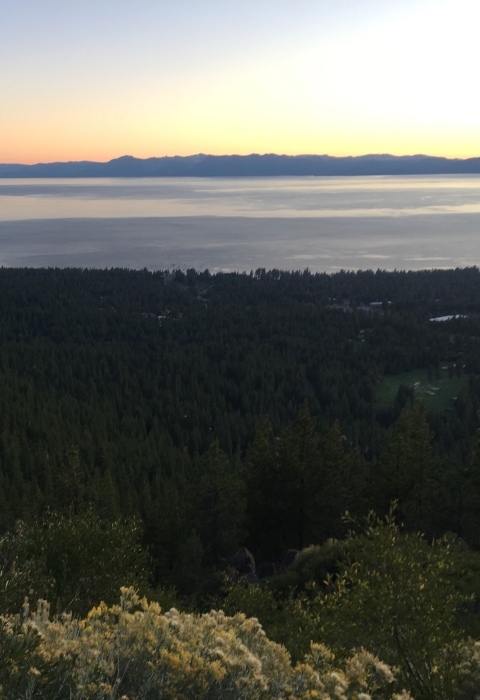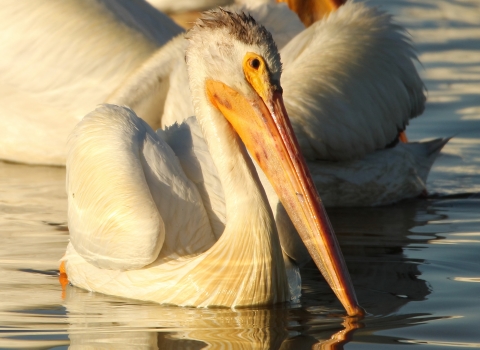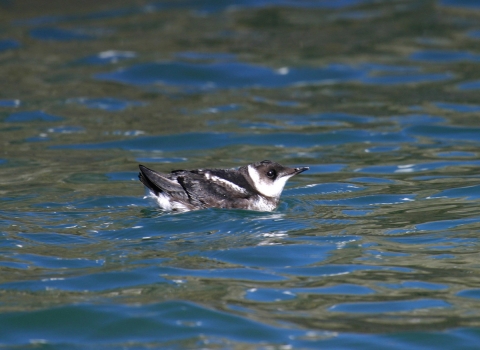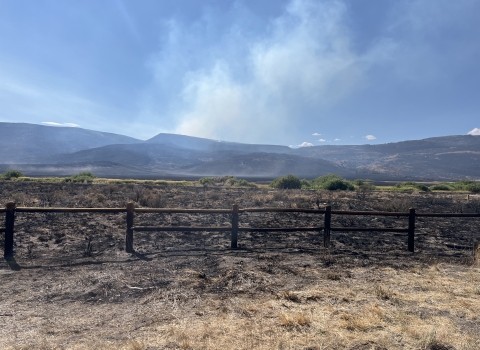SACRAMENTO, Calif. — The U.S. Fish and Wildlife Service today announced $3.1 million in fiscal year 2023 funding from the President’s Bipartisan Infrastructure Law Bipartisan Infrastructure Law
The Bipartisan Infrastructure Law (BIL) is a once-in-a-generation investment in the nation’s infrastructure and economic competitiveness. We were directly appropriated $455 million over five years in BIL funds for programs related to the President’s America the Beautiful initiative.
Learn more about Bipartisan Infrastructure Law to support the Lake Tahoe Aquatic Invasive Species Program and prevent and combat the spread of aquatic invasive species invasive species
An invasive species is any plant or animal that has spread or been introduced into a new area where they are, or could, cause harm to the environment, economy, or human, animal, or plant health. Their unwelcome presence can destroy ecosystems and cost millions of dollars.
Learn more about invasive species in Lake Tahoe. The funds will support existing cooperative agreements with the Washoe Tribe of California and Nevada and the Tahoe Regional Planning Agency and augment a historic effort to restore the Lake Tahoe Basin ecosystem.
Through the Administration’s Investing in America agenda, the Department of the Interior is implementing more than $2 billion in investments to restore our nation’s lands and waters, which in turn is helping the conservation goals set through the America the Beautiful Initiative.
“We are very proud to continue supporting the vital collaborations with local partners and Tribal leaders in Lake Tahoe, the world’s tenth deepest lake and one of the clearest and most spectacular bodies of water on the planet,” said Service Pacific Southwest Regional Director Paul Souza. “This significant investment will move us a step closer towards the restoration of one of California and Nevada's natural treasures, for the benefit of Lahontan cutthroat trout and other native species.”
The Bipartisan Infrastructure Law provided the Service with a total of $17 million over five years to expand important collaborative efforts for Lake Tahoe’s conservation and restoration. Today’s announcement marks the second year of funding toward these ongoing restoration projects.
The Lake Tahoe Basin is currently threatened by the introduction and spread of aquatic invasive species. Common invasive weeds, like the Eurasian watermilfoil, can significantly disrupt aquatic ecosystems and crowd out native species. For 15 years, Environmental Improvement Program partners have worked together to stop the spread of these invasive species and prevent new aquatic invasive species from entering Lake Tahoe.
In 2022, nearly 17 acres of benthic barriers were installed in Taylor and Tallac creeks and marshes to help smother invasive aquatic plants and prevent photosynthesis by blocking sunlight. To advance these efforts, the Service is working with the Tahoe Regional Planning Agency and the multi-partner Aquatic Invasive Species Coordinating Committee to identify priority areas for funding under the Bipartisan Infrastructure Law, including permanent watercraft inspection stations to aid in preventing the spread of invasive aquatic species. Under the Environmental Improvement Program, Lake Tahoe watercraft inspectors have examined more than 100,000 boats since 2008. In that time, no new invasive species have been detected in the Tahoe region.
Located on Washoe ancestral lands, Lake Tahoe holds significant cultural importance for the Washoe Tribe and is part of the historic range of Lahontan cutthroat trout. Since 1998, the Washoe Environmental Protection Department has worked as a key partner to oversee restoration efforts in the Lake Tahoe watershed. Projects through today’s funding will increase Tribal engagement and partnership and incorporate local Indigenous knowledge. Starting in 2023, the Washoe Environmental Protection Department will maintain a mobile watercraft cleaning station located at Meeks Bay Resort in collaboration with the Tahoe Regional Planning Agency.
Bipartisan Infrastructure Law investments have also contributed to expanding public outreach around aquatic invasive species to multilingual outdoor recreationists in the Lake Tahoe region through the development of Spanish-language educational and training materials.
Please visit U.S. Fish and Wildlife’s website or Tahoe regional Planning Agency’s website for more information about Lake Tahoe’s Aquatic Invasive Species Program and view the story map to see current Lake Tahoe Basin Bipartisan Infrastructure Law Projects locations and impacts. Images are also available in the photo gallery.
-FWS-
The U.S. Fish and Wildlife Service works with others to conserve, protect, and enhance fish, wildlife, plants, and their habitats for the continuing benefit of the American people. For more information about our work and the people who make it happen, visit https://www.fws.gov/cno/or connect with us via Facebook, Twitter, YouTube, Instagram and Flickr.



